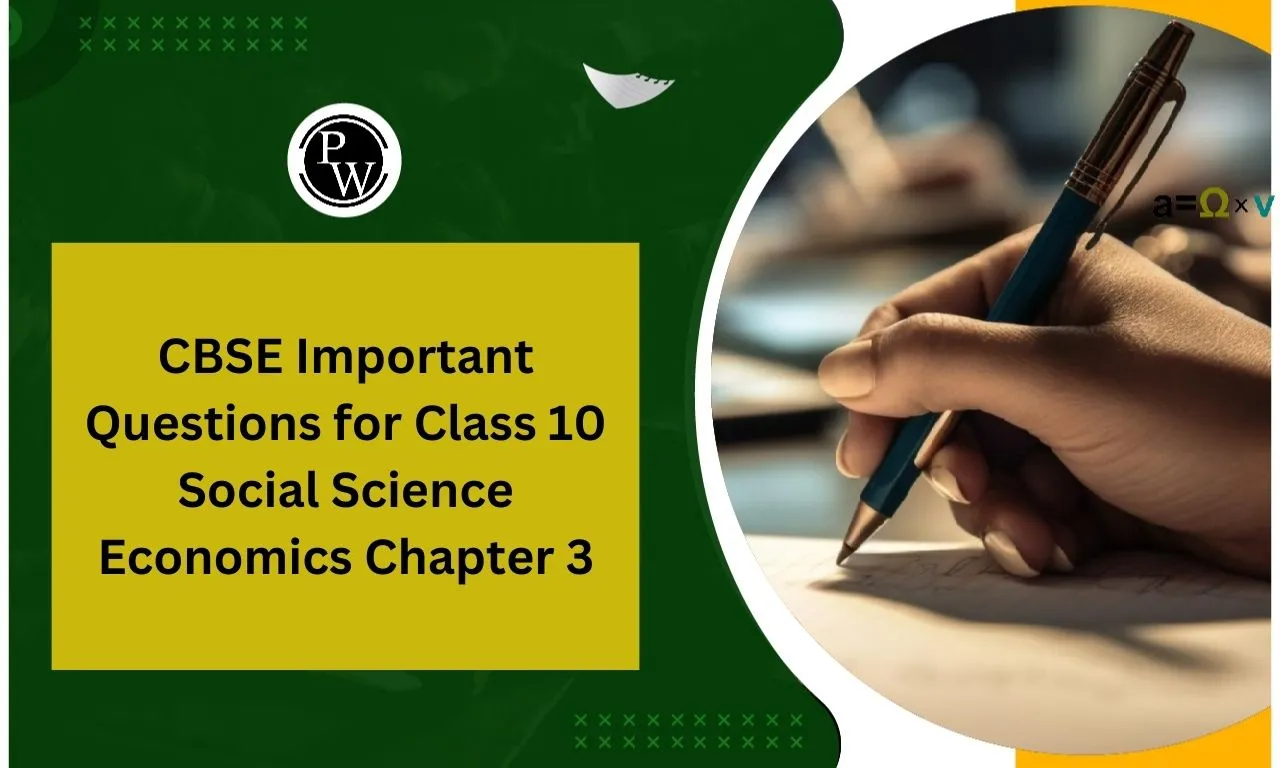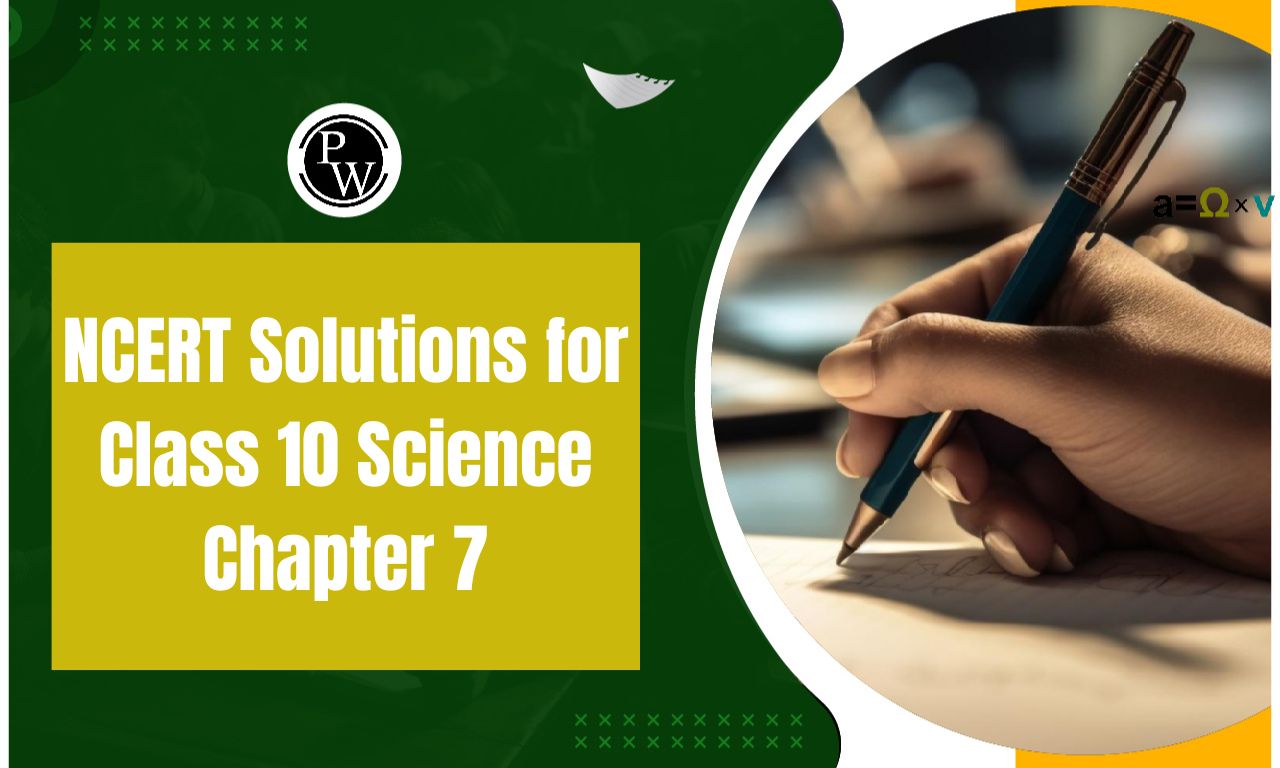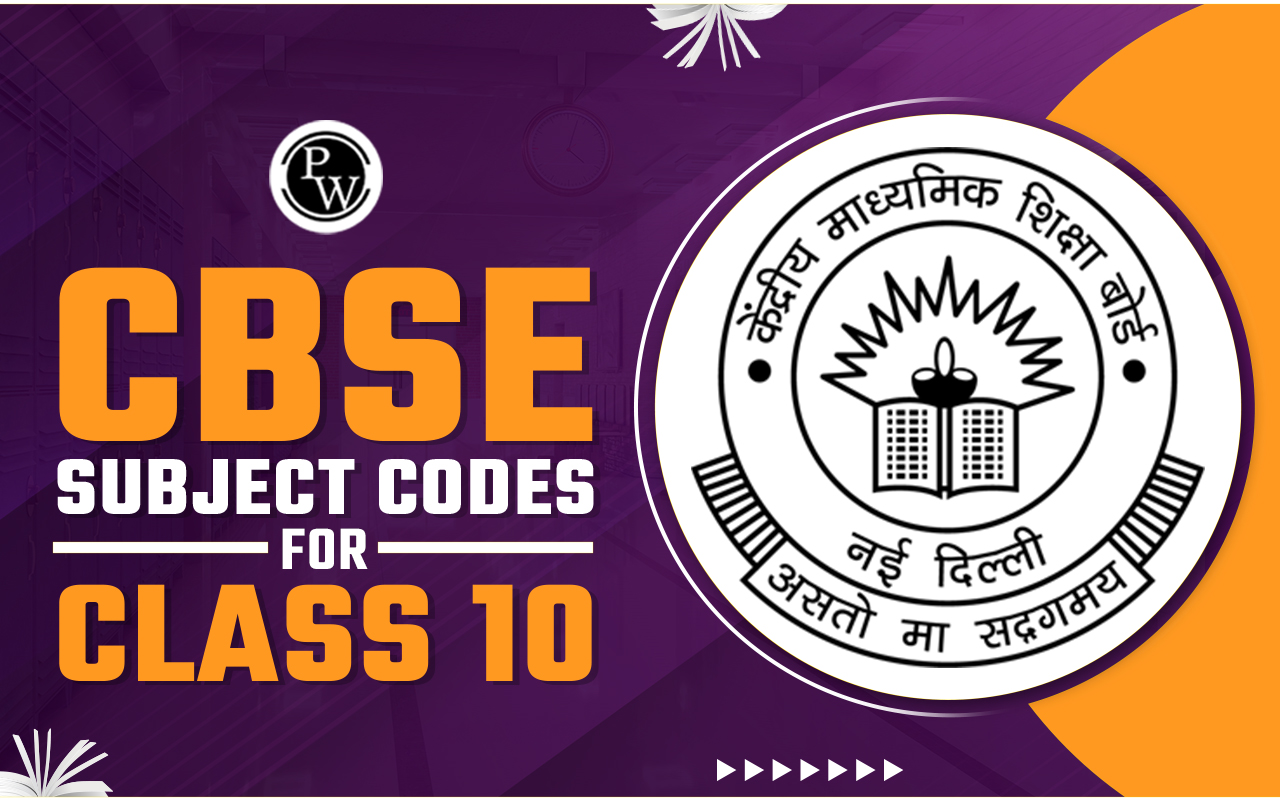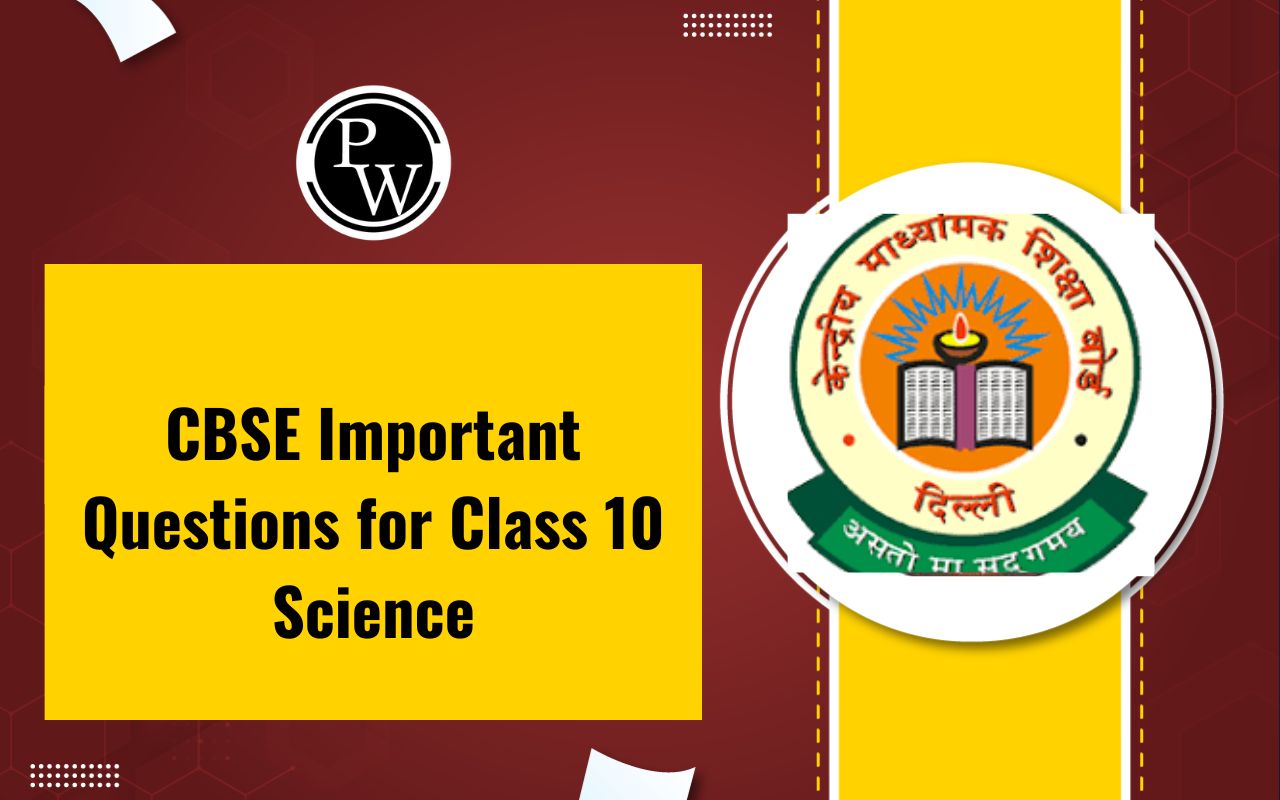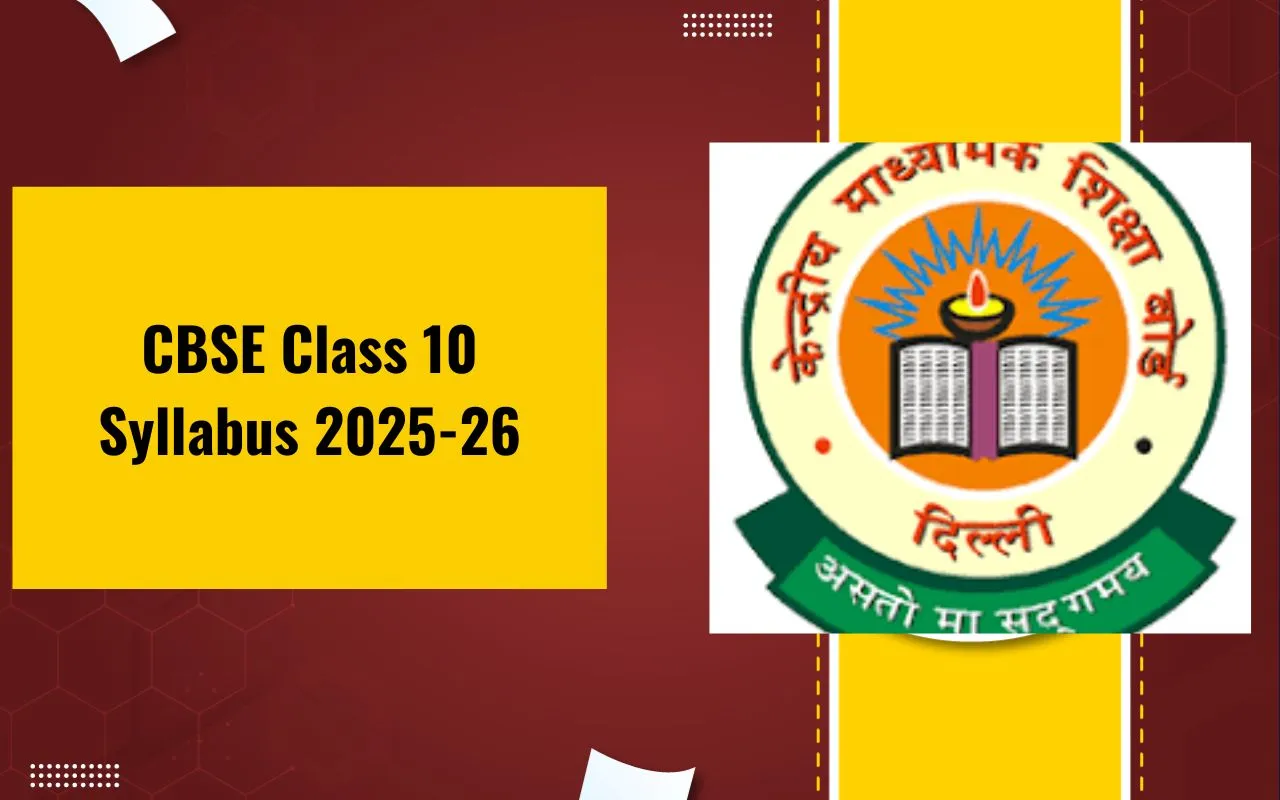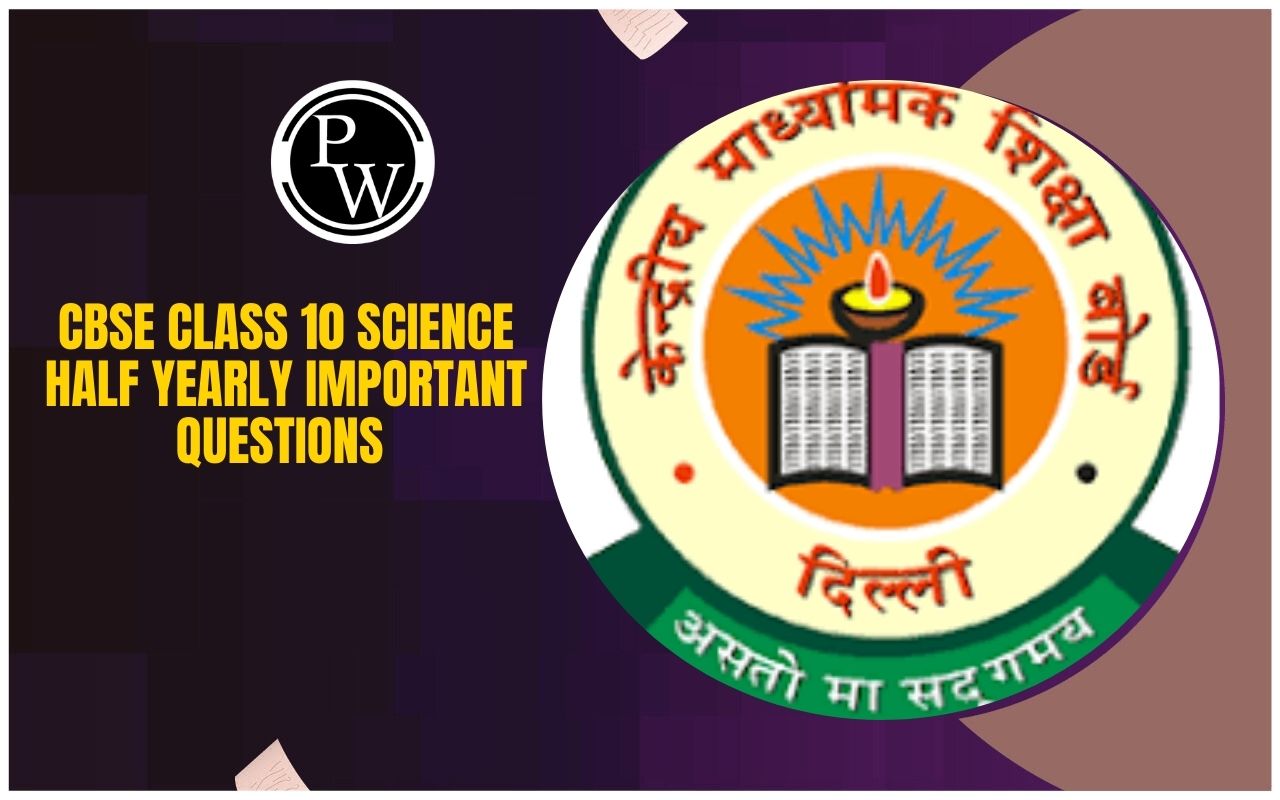
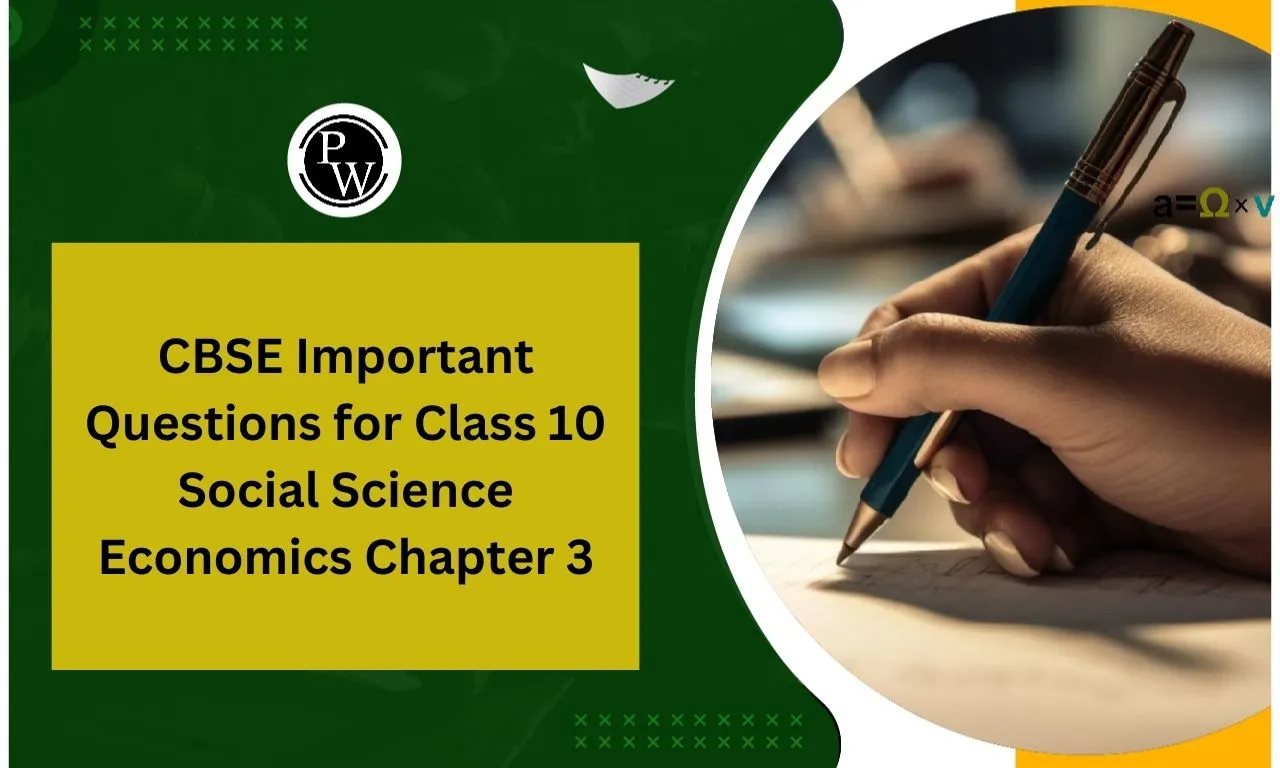
CBSE Important Questions for Class 10 Social Science Economics Chapter 3: Chapter 3 of Class 10 Social Science Economics, "Money and Credit," focuses on the role of money, credit, and financial institutions in an economy.
It explains the evolution of money from the barter system to modern currency, the functioning of banks, and the significance of formal and informal credit sources.
Key topics include the functions of money, the role of commercial banks, self-help groups (SHGs), and the impact of credit on borrowers. Important questions often cover concepts like collateral, terms of credit, and the differences between formal and informal credit. Understanding these topics helps students grasp financial literacy and economic decision-making.
CBSE Important Questions for Class 10 Social Science Economics Chapter 3 Overview
Chapter 3 of Class 10 Social Science Economics, "Money and Credit," is crucial for understanding financial systems and economic development. It covers the evolution of money, the role of banks, and the impact of credit on individuals and businesses.
Students learn about formal (banks, cooperatives) and informal (moneylenders) sources of credit, collateral, and self-help groups (SHGs).
These concepts help in making informed financial decisions, promoting responsible borrowing, and understanding economic inequalities. Important questions focus on the benefits and risks of credit, the role of banks in development, and financial inclusion, which are essential for real-world financial literacy and economic awareness.
CBSE Important Questions for Class 10 Social Science Economics Chapter 3 PDF
Chapter 3 of Class 10 Social Science Economics, "Money and Credit," explores the significance of money, the banking system, and credit in economic development.
It covers formal and informal sources of credit, collateral, terms of credit, and self-help groups (SHGs). Understanding these concepts helps in financial literacy and decision-making. Below, we have provided a PDF containing important questions to help students prepare effectively for exams.
CBSE Important Questions for Class 10 Social Science Economics Chapter 3 PDF
Important Questions for Class 10 Social Science Economics Chapter 3 with Solutions
Section –A (1 Mark)
1. Double coincidence of wants means ___________.
(A) What a person desires to sell is exactly what the other person wishes to buy.
(B) What a person desires to sell is exactly what the other person also wishes to sell.
(C) What a person desires to buy is exactly what the other person also wishes to buy.
(D) None of the above.
Ans. (A) What a person desires to sell is exactly what the other person wishes to buy.
2. Which one of the following is a formal source of credit?
(A) Traders (B) Cooperative societies
(C) Moneylenders (D) Friends and relatives
Ans. (B) Cooperative societies
3. All the banks act as mediator between _________ and _________.
(A) Rural people, urban people
(B) Literates, illiterates
(C) People, government
(D) Depositors, Borrowers
Ans. (D) Depositors, Borrowers
4. Organized credit is also called
(A) Informal credit (B) Formal credit
(C) Cooperative credit (D) None of these
Ans. (B) Formal credit
5. What are the different components of the terms of credit?
(A) Interest rate
(B) Documentation requirements
(C) Collateral
(D) All of the above
Ans. (D) All of the above
6. Banks use the major portion of the deposits to
(A) Extend loans
(B) Invest in infrastructure
(C) Deposit in foreign banks
(D) None of the above
Ans. (A) Extend loans
7. Which one of the following is a major reason that prevents the poor from getting loans from the banks?
(A) Lack of capital
(B) Not affordable due to high rate of interest
(C) Absence of collateral security
(D) Absence of mediators
Ans. (C) Absence of collateral security
8. Which is not the main source of credit from the following for rural households in India?
(A) Traders
(B) Relatives and friends
(C) Commercial Banks
(D) Moneylenders
Ans. (A) Traders
9. At present which form of money is increasingly used apart from paper money?
(A) Commodity money
(B) Metallic money
(C) Plastic money
(D) All the above
Ans. (C) Plastic money
10. Which state accounts for the maximum percentage of SHGs (self-help groups) in bank credit?
(A) Andhra Pradesh (B) Tamil Nadu
(C) Kerala (D) Karnataka
Ans. (A) Andhra Pradesh
Section-B (2 Marks)
11. The currency notes on behalf of the Central Government are issued by whom?
Sol. Reserve Bank of India.
12. What is a barter system?
Sol. When goods are directly exchanged for goods and there is no use of money, it is called barter system.
13. What is a commercial bank?
Sol. A commercial bank is a financial institution which deals with money and credit with a view to earn profit.
14. Why one cannot refuse a payment made in rupees in India?
Sol. One cannot refuse a payment made in rupees in India: Because it is accepted as a medium of exchange. The currency is authorized by the government of the country.
15. Why do banks ask for collateral while giving credit to a borrower?
Sol. Banks ask for collateral to reduce the risk of lending money to a borrower and to ensure that the borrower will repay the loan, Collateral is an asset that the borrower owns (land, building, vehicle, livestock, land documents, deposits with banks,
etc.) which stands as a security against the money borrowed. In case the borrower fails to repay the loan, the lender has the right to sell the asset or collateral.
Section-C (3 Marks)
16. Banks are an efficient medium of exchange.” Support the statement with arguments.
Sol. Banks are efficient medium of exchange:
(i) Demand deposits share the essential features of money.
(ii) The facility of cheque against demand deposit makes it possible to directly settle payment without the use of cash.
(iii) Demand deposits are accepted widely as a means of payment.
17. Why are terms of credit required for a loan or credit?
Sol. Terms of credit required for a loan or credit:
1. Terms of credit are required so that the borrower knows the conditions to take the loan.
2. The collateral, in the form of security or guarantee, is given to the lender until the loan is repaid.
3. If the borrower fails to repay the loan, the lender has all the rights to sell the assets or collateral to obtain the payment.
18. State three disadvantages of the barter system.
Sol. (i) In a barter system, double coincidence of wants is required
(ii) Here, the person is required to sell only what the other wishes to buy.
(iii) If both parties do not agree, the goods cannot be exchanged for goods
Section-E (4 Marks)
25. Case Based:
And credit are two fundamental pillars of any modern economy, playing crucial roles in facilitating economic transactions and fostering growth. Money serves as a medium of exchange, unit of account, and store of value, enabling individuals and businesses to conduct transactions efficiently.
On the other hand, credit provides access to funds for investments, consumption, and other financial needs, contributing to economic development and prosperity. Money, in its various forms such as currency, coins, and digital currency, simplifies trade by eliminating the need for barter.
It allows individuals to buy goods and services, making transactions faster and more convenient. Moreover, money serves as a common measure of value, facilitating price comparisons and economic decision-making. Additionally, as a store of value, money enables individuals to save wealth for future use, providing financial security and stability.
(i) What are the primary functions of money in a modern economy?
Sol. Money serves as a medium of exchange, unit of account, and store of value.
(ii) How does money simplify trade compared to barter systems?
Sol. Money eliminates the need for barter by providing a standardized medium of exchange.
(iii) What role does credit play in economic development?
Sol. Credit provides access to funds for investments, consumption, and other financial needs, fostering growth.
(iv) What are some forms of money mentioned in the passage?
Sol. Currency, coins, and digital currency are mentioned as various forms of money.
Section-D (5 Marks)
21. What are the terms of credit?
Sol. (i) Every loan agreement specifies an interest rate which the borrower must pay to the lender along with repayment of the principal.
(ii) In addition, lender may demand collateral, i.e., an asset that the borrower owns and uses this as a guarantee until the loan is repaid.
(iii) If the borrower fails to repay the loan, the lender has the right to sell the collateral to obtain payment.
(iv) Terms of credit comprise interest rate, collateral and documentation requirement, and the mode of repayment.
(v) The terms of credit vary substantially from one credit arrangement to another. They may vary depending on the nature of the lender and the borrower.
22. How are deposits with the banks beneficial for individual as well as for the nation? Explain with examples.
Sol. Deposits with the banks are beneficial to the depositors as well as to the nation in various ways. Some of them are:
• They provide safe and secure deposits to a person’s money.
• They provide excellent saving and investment options and also help in the growth of the nation.
• They provide interest on the deposited money to the depositors.
• Money can be easily withdrawn from the banks as and when required by the depositors.
• They provide easy loans at nominal rates that make it possible for the common man to build their own assets.
23. How can the formal sector loans be made beneficial for poor farmers and workers? Suggest any five measures.
Sol. Formal sector loans can be made beneficial for poor farmers and workers in the following ways:
(i) It is required to create awareness among farmers about formal sector loSol.
(ii) Process of providing loans should be made easier.
(iii) It should be simple, fast and timely.
(iv) More number of Nationalized banks/cooperative banks should be based in rural sector.
(v) Banks and cooperatives should increase facility of providing loans so that dependence on informal sources of credit reduces.
(vi) The benefits of loans should be extended to poor farmer and small scale Industries.
Benefits of Using CBSE Important Questions for Class 10 Social Science Economics Chapter 3
-
Exam-Oriented Preparation – These questions cover key concepts and are aligned with the CBSE exam pattern, helping students score better.
-
Concept Clarity – Helps in understanding important topics like money, credit, banking, and financial institutions effectively.
-
Time Management – Practicing these questions improves problem-solving speed and efficiency during exams.
-
Revision Aid – Acts as a quick revision tool before exams to reinforce learning.
-
Boosts Confidence – Regular practice enhances confidence in answering different types of questions.
-
Improves Analytical Skills – Encourages critical thinking on financial concepts and economic issues.
CBSE Important Questions Class 10 Social Science Economics Chapter 3 FAQs
What is the main focus of Chapter 3 in Economics?
What are the two main sources of credit?
What is collateral in credit?

